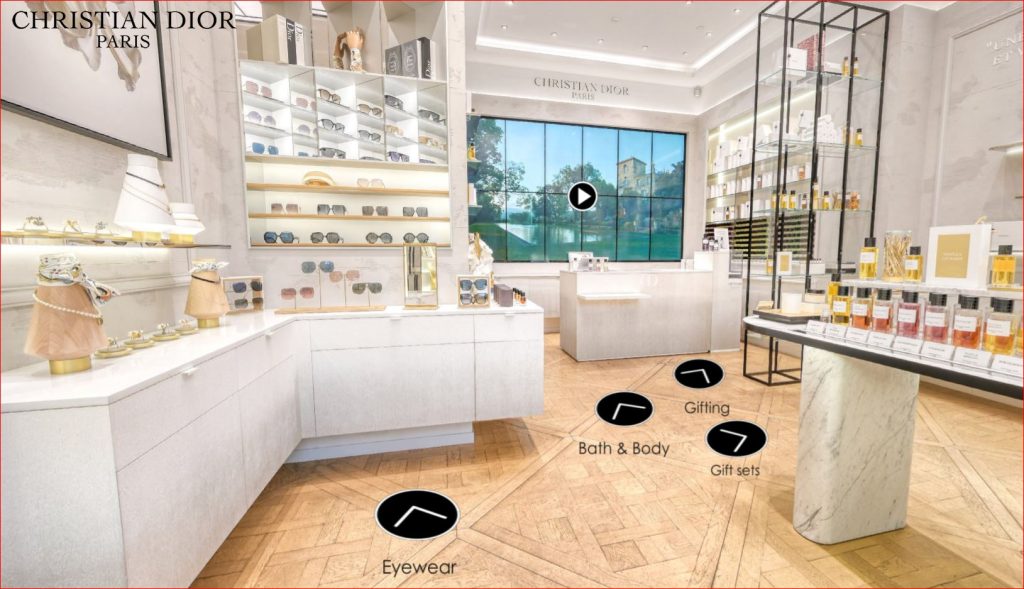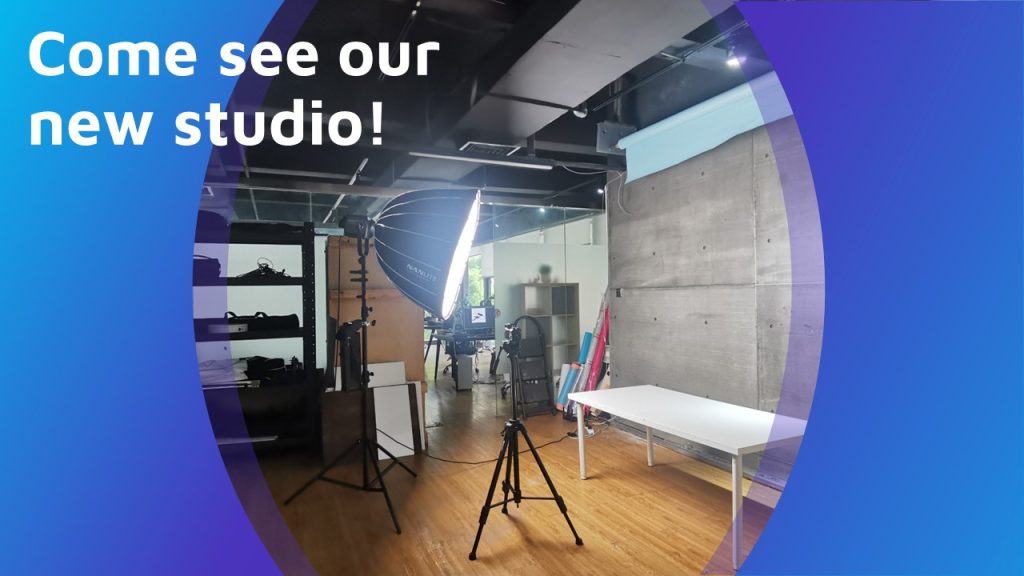So, what is the Metaverse?
Based on 1992’s futuristic novel “Snow crash”, written by Neal Stephenson, the Metaverse is a virtual representation of the physical world. An evolution of our screen-filled world. An artificial environment mixing the physical world, augmented and virtual reality to provide immediate immersive experiences.
The Metaverse is a shared mission with a common vision to advance in technology, entertainment, and connected services. And today we’re talking about the future of product content in the Metaverse.
Progress and development
A couple weeks back, Mark Zuckerberg announced Meta as the new Facebook name. The Metaverse is an ambitious project based on a shared vision to which other tech giants have been contributing for some time now.
- Microsoft. While Microsoft MESH for Teams can give us an idea on where online meetings are headed to, the development of the Hololens opens the door for mixed reality collaborations with amazing opportunities possibilities in terms of education, healthcare, design, and manufacture.
- NVIDIA. The Omniverse is how Nvidia sees the connection of different 3D worlds in a single platform. NVIDIA’s AI graphic processing units are a key element to connect users – through Nucleus – and scenes through USD (the Universal Scene Description created by Pixar in 2012).
- EPIC Games. From Fortnite to Roblox, EPIC Games has taken revolutionary steps by allowing users to create and monetize open-source avatars, assets, and objects in Developer marketplaces. More than USD 1 billion raised, including USD 200 million from SONY can show how serious their bet is.
Apple’s advantage in high-processing hardware will also play a key role in developing the Metaverse. Just as Google and Amazon’s advance in cloud/web services, software, and UX/UI.
Benefits and opportunities
After seeing the rise of e-commerce during the pandemic, many brands (mostly fashion) have accelerated the transformation of their online experience by implementing AR and VR. Consumers around the world search for in-shop experiences, where products get a real touch & feel. The advantages are unseizable.
Virtual stores
Dior‘s VR version of its store in Champs Élysées remains one of the best examples of what product content in the Metaverse is going to be like: a 3D e-commerce experience where products can be seen on shelves, taken, closely looked at, and their labels read.

Interior design is also an essential part of physical businesses to transmit values and ideas. And VR extends that to the online experience. Add AI assistants, user personalization, and the IoT, and imagine the potential: promotion, upselling, cross-selling, and customer loyalty.
Product information
Groceries may not be as attractive as a luxury clothing shop, and yet Walmart has also got on board to improve the online shopping experience, allowing people to discover and learn about new products beyond a simple image grid.
So, besides the immersive experience of going shopping, product specifications and clear information help buyers make better decisions.
Product simulations
Virtual Try-ons through AI algorithms exist for fashion and cosmetics, mainly.
But as simple as is it to scan a room with your phone, choose an item, and place it where you think it belongs, IKEA has also taken the lead with Augmented Reality, and allows product simulations through the Ikea Place App.
Time and money saving
Unclear information, low-quality imagery, and incomplete product descriptions can result in more inquiries and more returns. And that can be time-consuming.
3D gives a clear and realistic 360º view where products can be rotated, flipped, and zoomed. A closer view where textures, materials and finishes leave little room for doubt or hesitation, thus significantly improving customer experience.
Clear explanations lead to real expectations.
Challenges
Trust and security
The main drawback for many. The number of cameras and sensors necessary to gather and provide information is a red flag for many people concerned about Facebook’s privacy scandals. How data is used, stored, and sold are the main drawbacks for the skeptical/reticent, and can be critical in the regulatory frame to develop the Metaverse.
Chips, resources, and the supply chain crisis
Cameras, sensors, and 3D glasses need high-performance chips, and there is a heavy crisis going on, affecting manufacturing and supply chains. Solving that crisis is not the only question here. Fierce competition or close collaboration are equally likely to come.
Connectivity
In the same way not all computers can work content in 3D, the amount of data that the Metaverse will transmit is way ahead of our current possibilities. Right now, few computers in the world could take it. According to Qualcomm, connections of at least 200 MBPS will be needed to process all that information in real time, and widespread implementation of 5G is an indispensable step.
The shortages to mass-produce high-end technologic equipment, and the wealth differences around the world make this challenge even bigger.
There’s a long way for it to be affordable and accessible to the public, but it’s happening.
A lot of changes are yet to come
Despite not being a short-term reality, the huge investment made on the Metaverse makes it more than just a trend. The idea of the Metaverse is paving the road to develop a new Internet.
The question is not whether it will happen or not, but when we will be ready for the shift. As of now, the estimations are 10 to 15 years, depending mainly on the available resources and worldwide connectivity. But AR and 3D are already top-selling trends that are gaining strength, and we don’t know what or when the next revolutionary step will come.
That being said, there’s broad consensus on the fact that anticipation can be advantageous. Companies using 3D and Augmented Reality will be one step closer to the Metaverse. And when the time comes, their sales will have significantly increased, therefore reducing the necessary investment to adapt to this inevitable change.
Preparing your product content in the Metaverse
The Metaverse won’t be a widespread reality before 2030. It will take some time for equipment and infrastructure (connectivity, device performance, VR glasses, and gloves…) to be available in enough homes for it to be profitable. Still, it won’t be surprising to see more and more companies getting ready for it. Because after all we’re only talking 8 years from now, and we don’t know what products or inventions can fuel its progress.
Businesses getting their product content ready for the Metaverse will get a serious advantage, both in sales and brand awareness. And even those with a limited budget can (and should!) consider investing in their graphic assets. It is a sure bet in the short, mid, and long term.
For the moment, there’s a couple things you can do:
- Get High-Resolution product photography, and make sure all text is readable. Not only will you show your products features, but also provide all specs and label information.
- Consider taking your products to the third dimension with 3D animations.
- Digitalize your existing product content, and start including that in your budgets.
- Stay tuned to upcoming news, and see how they could affect your business.
At Content2Sell we are rolling up our sleeves to promote 3D as the sales magnet it is. And the rise of AR and VR is showing the way for product content in the Metaverse.
Of course, not all products can be immediately taken to the third dimension. But we sure can help you get ready for this exciting new era. Schedule your call now and get a FREE content audit and action plan.



